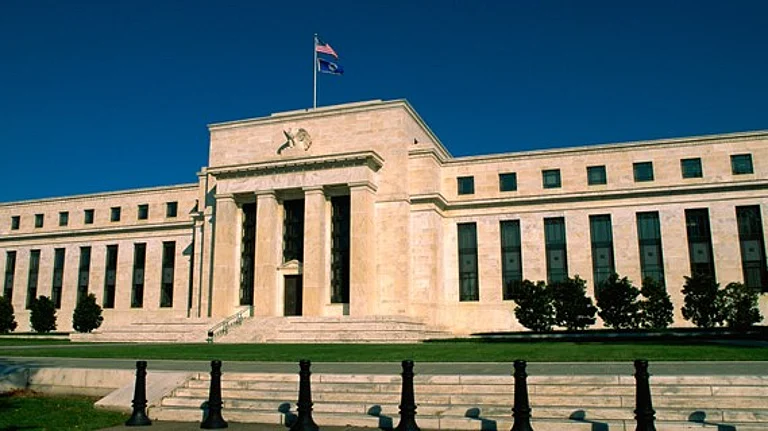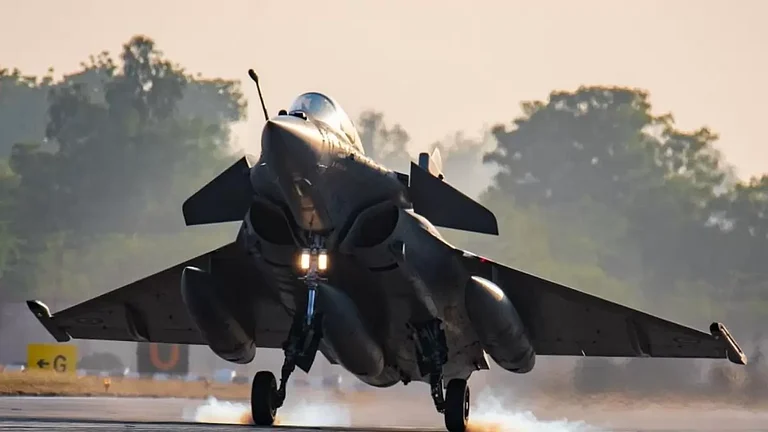Just like life, the rupee has its paradoxes—when it rises against the dollar, some cheer, others worry; and when it falls, the winners and losers simply switch places. Whether climbing or slipping, every move carries its own set of perks and problems and there is no absolute good or bad.
Heads or Tails: Why is the Rupee Appreciation a Two-Edged Sword?
The rupee’s movements, whether rising or falling, come with both benefits and drawbacks. A stronger rupee helps reduce import costs and improve India’s balance of payments
The rupee has witnessed some appreciation recently, after cracking under pressure in the initial months of 2025. However, going ahead, the local currency also looks set to trade with an appreciating bias. According to Kotak Institutional Equities, rupee currently appears to be fairly valued on real effective exchange rate basis. Today, rupee opened higher at 84.64/$ compared to Wednesday’s close of 84.83/$.
The real effective exchange rate is the weighted average of a country's currency in relation to an index or basket of other major currencies and the weights are determined by comparing the relative trade balance.
However, this upside movement is not specific to the Indian currency, instead, it is the US dollar’s depreciation against major global currencies over the past one month that has triggered the spike. This was mainly due to the markets’ knee-jerk reactions to macro-economic developments, Kotak said in a report.
The dollar index has weakened recently amid uncertainties around a slowdown in the US economy, trade disruptions, and fiscal uncertainty.
Where the Rupee is Headed in Near-term?
It was just a couple of months back when the market was predicting depreciation in the rupee against the dollar, however, the dynamics now seem to have flipped, with murmurs around expectations of how much can the rupee appreciate hereon? The Indian unit has erased all losses that it incurred in 2025, largely sparked by a comeback of foreign money into the markets and a weakening dollar index. It fell to its lowest at 87.95 a dollar on February 10 and had appreciated 4% since then till April-end.
The Indian currency is expected to end the ongoing month broadly unchanged from current levels post-strong run in April. This is mainly due to sustained weakness in the dollar index, which is expected to offset the impact of the weak risk appetite among investors amid increased India-Pakistan tensions. Market expects the Indian unit to close this month at 84.50 a dollar.
The rupee has also appreciated against major global currencies over the past two weeks but it is still weaker on medium-term basis, Kotak said.
Pros of Rupee Appreciation
In a scenario where the rupee appreciates, India saves on its balance of payment and current account. An appreciation of a rupee over dollar results in savings of Rs 16,000 crore on imports, the brokerage firm said.
Stronger rupee is positive for imports as for every dollar worth of goods, the country will be charged with lesser amount of its own currency. This will result in large savings for the country from the lower prices of imported energy. Theoretically, India can see savings of Rs 40,000 crore-1 lakh crore from the rupee appreciation, Kotak said. The lower-end is achievable if the rupee rises to 84-levels, whereas the higher-end is achievable if the currency test the mark around 80, the report states.
In addition to boosting current account and fiscal account, these savings could also be used to reduce the retail automobile fuel prices, which in turn would increase household’s spending ability. Theoretically, India can see Rs 22,500-57,000 crore of incremental savings in automobile fuels from currency appreciation, Kotak said, taking lower-end at 84 rupee a dollar and higher end at 80 rupee a dollar.
Beyond macro-economic benefit, stronger rupee also adds gains to import-focused industries such as automobiles, specialty chemicals, construction materials and real estate sectors due to lower global commodity prices. Appreciated currency unit could theoretically decrease the input costs for the companies that are heavily dependent on imported goods as raw materials, thus boosting their earnings in the corresponding period.
Cons of Rupee Appreciation
Here lies the paradox. Not everyone enjoys a strengthening rupee. An expected appreciation in the currency will likely hurt the earnings of the Indian market due to the high share of profits of the export-oriented corporate in the listed space. In FY26, export-oriented and global commodity sectors are expected to contribute nearly 40% of the aggregate earnings of the Nifty-50 companies, Kotak said. This share is 37% in the coverage universe of Kotak Institutional Equities.
While stronger rupee lowers import costs, it also decreases export income as for every dollar worth of goods dispatched one will earn lesser rupee. If rupee continues to rise against the dollar, several heavyweight companies and sectors such as IT services, metals and mining could see notable earnings pressure, Kotak said.
Among the Nifty 50 companies, IT stocks such as TCS, Infosys and HCL Technologies could see downside revision of up to 4% in the earnings per share for FY26 if the rupee appreciates to 84 a dollar, while this revision could further deepen up to 19% in case the currency reaches the 80-level, Kotak said in its report.
If the rupee appreciates to 84 against the US dollar, Hindalco Industries, JSW Steel and Tata Steel may see their FY26 EPS estimates cut by 8-13%. A sharper rise to 80 could deepen the EPS hit to 22-30%, the brokerage firm said. Similarly, pharmaceutical companies—Cipla, Dr. Reddy’s and Sun Pharma could see their EPS estimates for FY26 drop by up to 3% if the currency appreciates to 84 per dollar, and by as much as 6% if it strengthens to 80.


